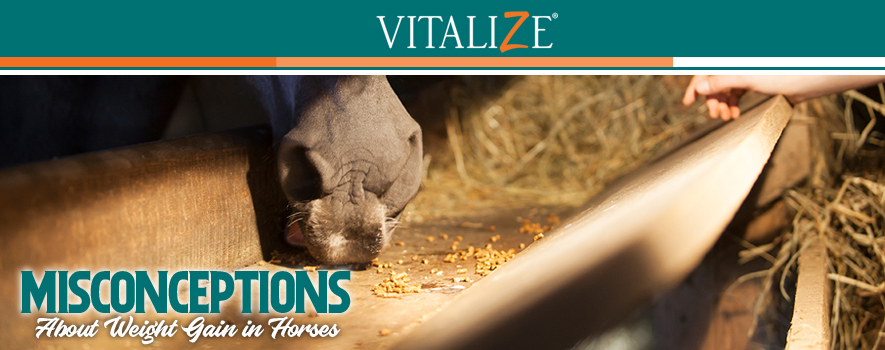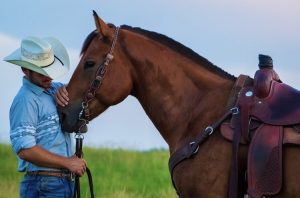When it comes to adding weight to a hard-keeper, there are many different avenues to achieve great results. There are also some methods that may seem beneficial but are not actually the most effective. Here we will discuss some common misconceptions about weight gain in horses.
Many horse owners will look to grain to solve their weight gain troubles. However, adding more grain does not necessarily mean adding more weight. This is because horses, as grazing animals, were not designed to process the large amounts of starch found in most grain. Even grains labeled “low starch” can have too much starch for certain horses when included in the diet at high levels. The challenge with feeding big portions of grain is that grains must be digested in the stomach, which in a horse is only about the size of a football. As such, the stomach cannot accommodate large meals, especially if they are consumed quickly. The result is undigested grain and starch leaving the stomach and arriving at the hindgut, where it is fermented by the gut microbes that reside there. The fermentation of this undigested starch produces lactic acid, which lowers the pH of the hindgut (often causing hindgut acidosis) and kills off beneficial, fiber-digesting bacteria. Furthermore, molecules that are released from the fermentation of starch can cause laminitis or founder. Adding too much grain to the diet can also lead to obesity and associated problems such as equine metabolic syndrome.
Adding forage to the diet is generally a safer bet and will help achieve more weight gain than grain. Fiber is the most important source of energy for the horse and is the major component of forage and hay. When grass or hay is consumed, microbes in the hindgut break the fiber down into volatile fatty acids (VFAs) that can be used for energy or stored as adipose tissue (fat) or muscle glycogen. To meet their energy needs, horses should be fed forage at a rate of 1.5 – 2% of their body weight each day. For example, a 1,000-pound horse needing to gain weight would ideally eat at least 20 pounds of hay or grass a day. When quality hay or good pasture is not available, an alternate fiber source, such as beet pulp, alfalfa pellets/cubes or soy hulls can be substituted in the diet.
Increasing the amount of feed a horse is receiving may not improve weight gain alone. In addition to increasing feed, making sure the gut is in tip-top shape is also important. For example, if the microbes in the gut are not efficiently digesting fiber, it will be hard for your horse to gain weight. Taking it a step further, even if digestion is good, if the nutrients released from the feed are not absorbed, the horse will still not be utilizing all that feed. This is where a prebiotic like Amaferm® comes in. Amaferm is research-proven to increase the digestibility of both starch and fiber and increase the absorption of nutrients by up to 30%. This not only helps to ensure your horse gains weight, but also that your money isn’t being wasted on feed that the horse is not utilizing effectively. BioZyme®’s line of equine supplements, Vitalize®, contain a full dose of Amaferm in every serving. For weight gain, we recommend trying a Vitalize product like Digest More® Plus, Protein Pellets or High Performance.
Give them a try and be patient with your course of action, whatever it may be.


